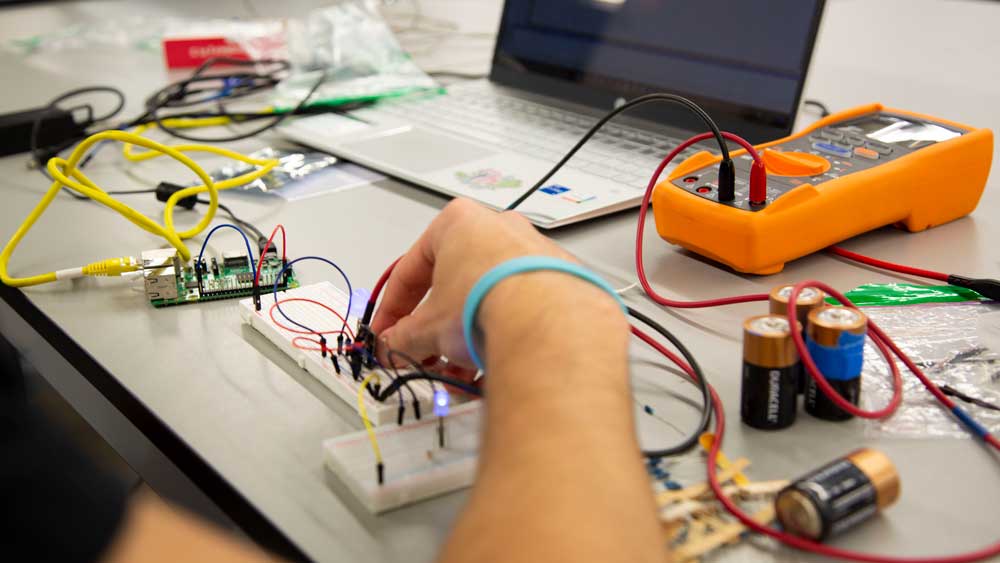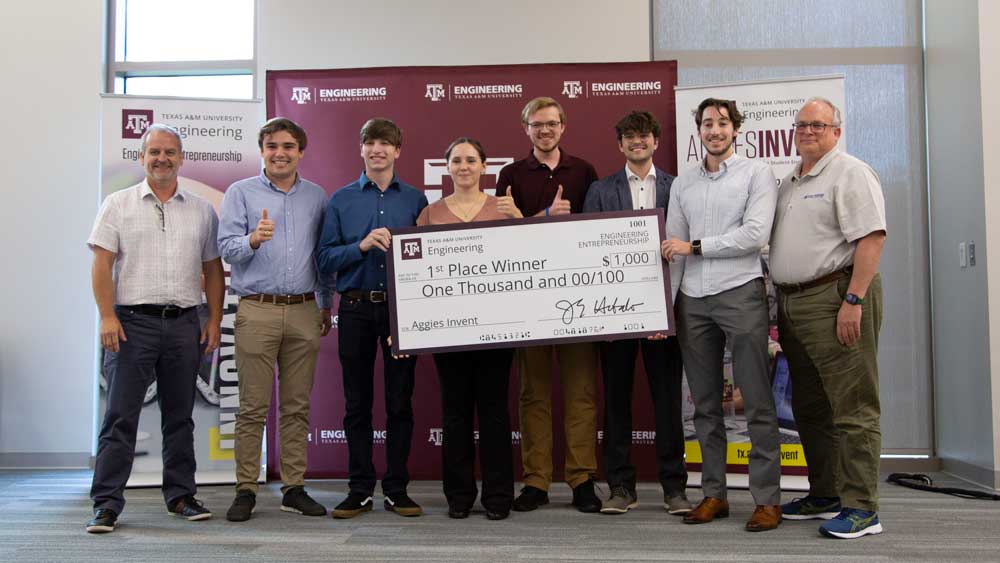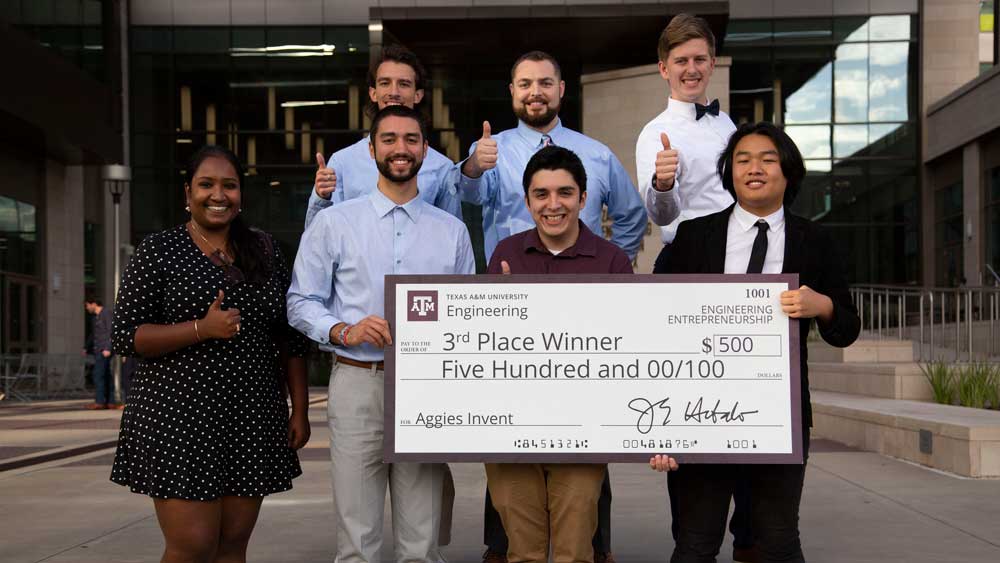
The Texas A&M University College of Engineering hosted Aggies Invent with the theme of solving different problems facing nuclear security. The challenge questions were influenced by situations researchers at the Los Alamos National Laboratory confront every day.
Within 48 hours, 11 teams researched and developed an idea with the help of mentors from Los Alamos, which they presented to a panel of judges.
Once the event ended, teams had the opportunity to transform their idea into a start-up company through the College of Engineering's Engineering Inc. program.
"These are some of the most complex problems we actually have at Los Alamos. We're able to bring these over in an unclassified form, and the students are able to attack these and give us really viable solutions," said Dr. Donald Quintana, division leader for weapons modernization at Los Alamos and judge for the competition. "They're not perfect, but at least it gives us that kind of outside-the-box thinking that we're looking for."

After a lengthy deliberation, the judges announced the top three teams to award. First place went to the team DeGenerators. Their idea was to use a pressure differential to preserve energy and convert it to potential energy so it could be used at any time. This idea creates reliable access to power that can be trusted anytime during an emergency.
“We used everyone's best skill and where they were suited to do that particular project. I think that really gave us an advantage in the end,” said senior electrical engineer Samuel Roth. “We were able to hone in on what everyone's good at and then bring that all together at the end.”

The second-place team Ultrabot's goal was to have the ability to scan complex geometries, so they created a probe mounted on a robotic arm that would automatically scan and give calculations of models. The system simplifies and automates ultrasonic testing of complex parts.
“Aggies Invent really does prepare you for industry in that it prepares you for how to attack a problem and take on a project efficiently and effectively,” said junior mechanical engineer Jena Hopper.
